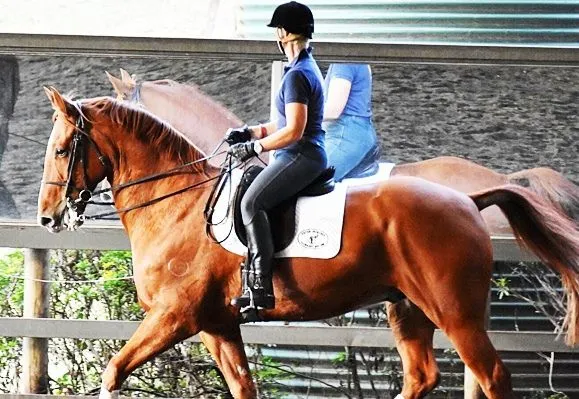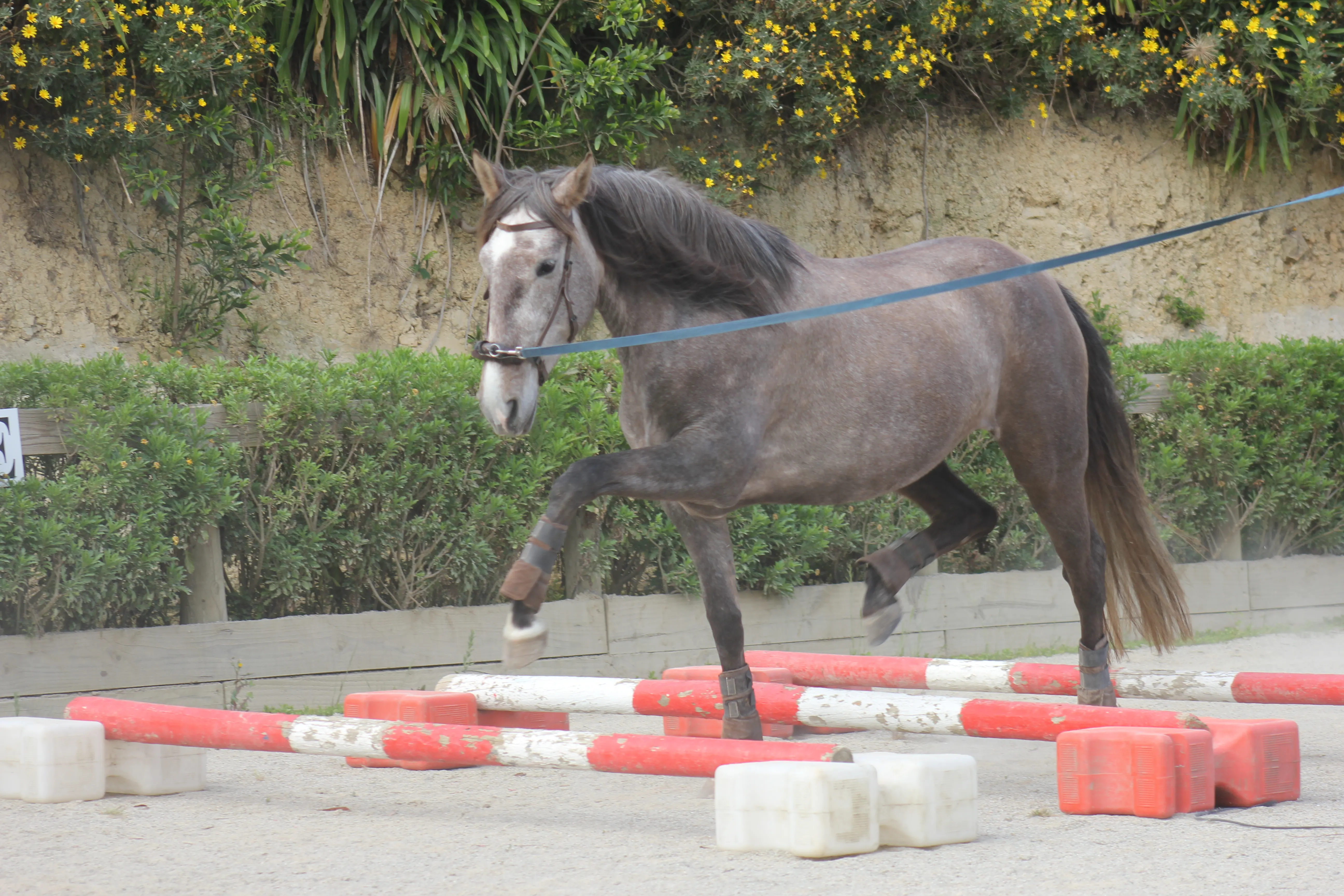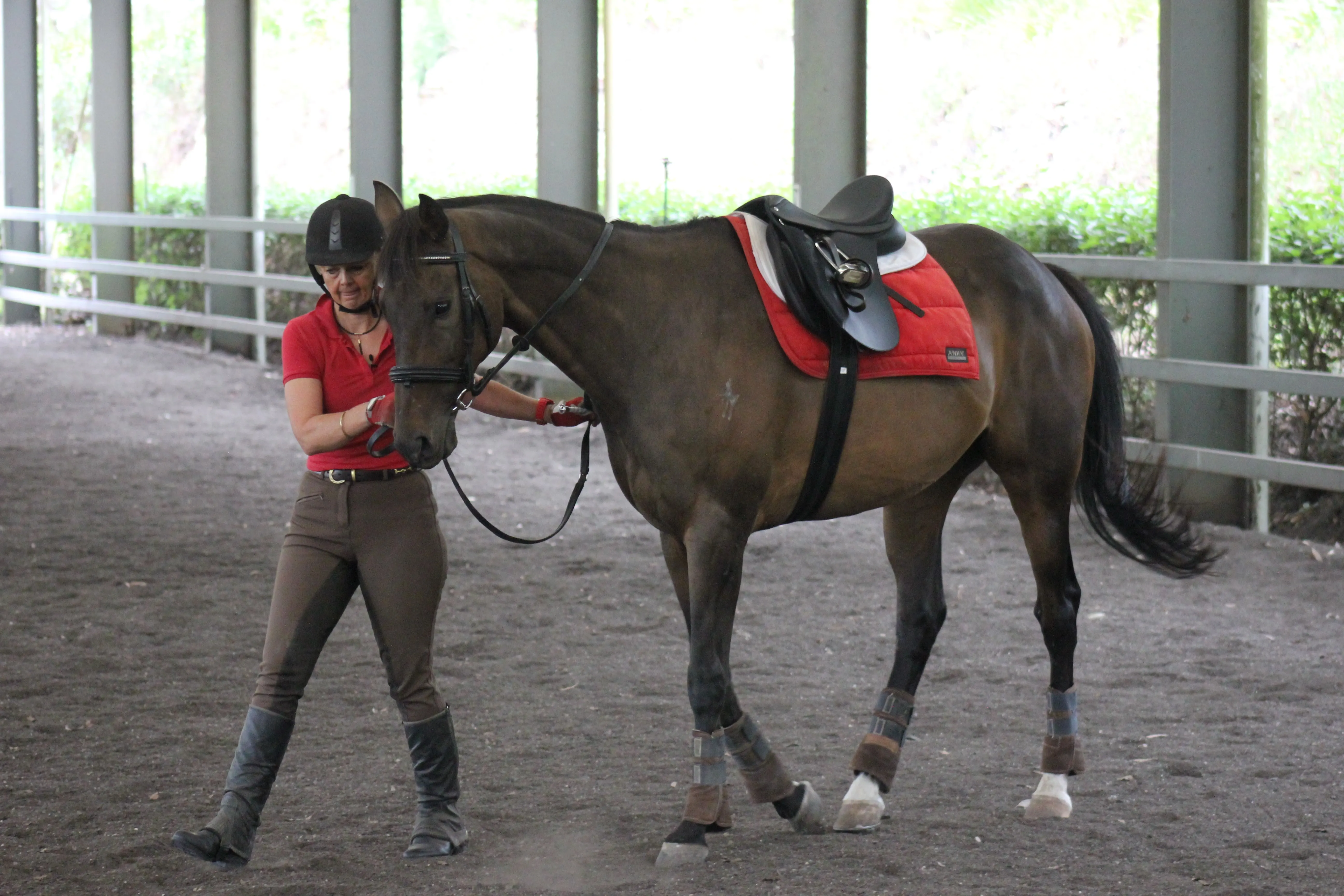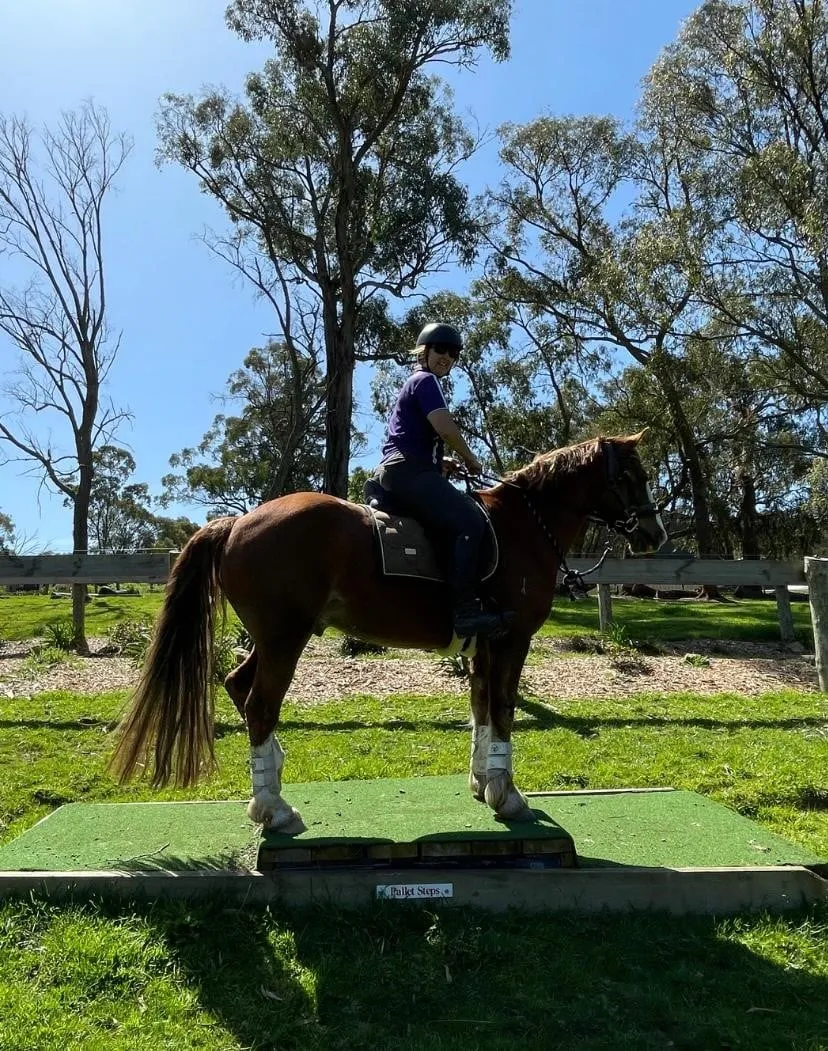How Cross Training Your Horse Aids in Longevity.
When you think of a top-level performance horse, you might picture one doing pirouettes in a dressage arena, flying around a showjumping course or galloping out on a cross-country track. What you don’t always see is the behind-the-scenes work that keeps that horse sound, strong and mentally willing for years. That’s where cross training comes in.
Cross training your performance horse isn’t just a fancy way of saying “do more stuff”—it’s a thoughtful, structured approach to building a more balanced, robust and long-lasting athlete. Whether you’re aiming for elite competition or simply want a sound, happy horse that enjoys their work, incorporating cross training into their routine can make all the difference.

Let’s explore how and why.
What is Cross Training?
Cross training refers to a variety of different training techniques, exercises, and disciplines used alongside your horse’s main focus—be it dressage, show jumping, eventing, endurance or anything else.
Think:
**Correct lunging without artificial aids**
**Groundwork and in-hand work**
**Equine treadmills for balance and fitness**
**Trail riding**
**Dressage basics**
**Cavalletti work**
**Jumping (even for dressage horses!)**
It’s about mixing things up in a smart way to keep your horse physically and mentally healthy.
The Long Game: Starting Early, Building Slowly
While no one’s advocating riding a baby horse too young, there “is” plenty you can do in the early years to set your horse up for a long and healthy career. Starting non-riding education around 18 months of age with light groundwork, in-hand suppling, leading out on trails and basic handling lays a strong foundation.
This early phase is where you start introducing body awareness, rhythm, responsiveness and the all-important “posture”. Teaching a young horse how to carry themselves, how to step under their body and how to use their back correctly pays huge dividends later on. At this stage, everything is short, positive and done in moderation.
From around 4 to 5 years old, you can gradually introduce the ridden phase — again, thoughtfully and patiently. This is where cross training begins to shine.

Why Cross Training is Key to Longevity
1. Balanced Muscle Development
Horses, like humans, can get strong in all the wrong places if we’re not careful. A horse that only ever works in one way—say, collected trot in an arena—can become overdeveloped in some muscle groups while others remain weak. That’s a recipe for uneven loading, strain, and eventually injury.
Cavalletti work, for example, engages the core, lifts the back, and helps develop the glutes and hamstrings. Trail riding builds stamina and works the entire body on uneven terrain. Jumping encourages power from the hindquarters and elasticity through the back.
By rotating through these different types of work, you're building a well-rounded athlete with a symmetrical, functional body.
2. Tendon and Ligament Conditioning
One of the most under-discussed aspects of cross training is its effect on soft tissue health. Tendons and ligaments don’t respond to short-term bursts of training—they need consistent, gradual loading over time to strengthen properly.
A varied workload—like hill work on a trail, pole exercises or even time on an equine treadmill—exposes these tissues to different types of forces in a controlled way. This not only builds resilience but helps prevent those catastrophic soft tissue injuries we all dread.
And don’t underestimate the power of “correct lunging”. A short, purposeful lunge session (without gadgets or side reins pulling the horse into a false frame) can build strength and coordination. Focus on forward movement, transitions, and correct bend—not endless circles.
3. Bone Density and Joint Health
Just like human athletes, horses need weight-bearing work to build bone density. This happens over time and requires careful management—too much too soon can lead to issues, but too little can leave them vulnerable.
Trail riding and time out on varied terrain is excellent for this. Walking up and down gentle hills strengthens the joints, encourages joint fluid circulation, and contributes to overall soundness. It’s low impact but very effective.
An equine treadmill—especially one with an incline—can replicate this kind of work in a safe, controlled environment and is excellent during rehab or as a low-strain fitness booster.
4. Postural Development and Core Strength
The horse's posture—the way it carries itself at rest and in work—is fundamental to its long-term soundness. A horse who hollows the back, falls on the forehand, or travels crookedly is on a fast track to discomfort and injury.
Cross training offers many ways to help develop better posture. Dressage is the gold standard here, but the key is *correct*, foundational dressage—not forcing a frame or obsessing over head position.
Groundwork, in-hand work, pole exercises, and light hill work all encourage lifting through the back, engagement of the core, and alignment from nose to tail. When you combine these consistently, you get a horse that moves better, stays sounder, and uses their body efficiently.

The Mental Game: Preventing Sourness and Burnout
Cross training doesn’t just benefit the body—it’s a mental game changer too.
Performance horses, especially those in high-intensity disciplines, can become sour or mentally fatigued if their routine is too repetitive. That’s when you start seeing nappiness, tension, resistance, or even learned helplessness.
Adding variety—such as a weekly trail ride, a low-pressure groundwork session, or an occasional pop over a jump—gives your horse a break from mental pressure. It keeps their brain engaged, reduces stress, and fosters a willing partnership.
A happy horse is a safer horse, and one that stays in work longer.
Discipline Doesn’t Matter – Cross Train Anyway
You don’t have to be an eventer to do poles. You don’t need to jump competitively to teach your horse how to pop over a log. Dressage horses benefit enormously from trail rides and hill work. Showjumpers gain body control and suppleness from flatwork and cavalletti.
There’s absolutely no downside to cross training, as long as it’s done with thought and purpose.
Longevity in Real Terms
When we talk about longevity, we’re not just talking about age—we’re talking about quality of life.
A cross-trained horse is more likely to:
* Stay sound into their late teens and beyond
* Have fewer repetitive strain injuries
* Recover more quickly after intense efforts
* Be mentally happier and more cooperative
* Transition easily between disciplines or career phases (e.g., from eventing to dressage or from competition to pleasure riding)
These are the horses that keep going—not just physically, but with ears forward and eyes bright. That’s what we’re all aiming for.
---
A Sample Week for a Performance Horse
Here’s an example of what a balanced week might look like for a mid-level performance horse in regular work:
Monday: Dressage schooling (30–45 mins, focusing on balance and transitions)
Tuesday: Trail ride (including hills, walking over logs, maybe some trot or canter stretches)
Wednesday: Groundwork / in-hand session (30 mins of suppling, yielding, backing, etc.)
Thursday: Jump or cavalletti session (light gridwork or pole patterns)
Friday: Rest day
Saturday: Treadmill session (20 mins walk with incline, or light trot if appropriate)
Sunday: Arena hack or another light dressage ride, followed by stretch
You can shuffle this based on your horse’s needs and competition schedule, but the key is *variety*.

---
Final Thoughts
Cross training isn’t just a trendy training approach—it’s a science-backed, horse-friendly way to build longevity. By incorporating diverse types of work from an early age and continuing that mix throughout your horse’s life, you’re investing in soundness, strength and happiness.
Whether your horse is just starting out or already well into their career, it’s never too late to shake things up and give them a more balanced program.
Remember, horses don’t come out of a stable or paddock with perfect bodies or minds. They’re developed over years, and every ride, every groundwork session and every walk up a hill is part of that story.
So mix it up. Your horse will thank you for it —
today and twenty years from now.
